Related Research Articles

Afghanistan, officially the Islamic Emirate of Afghanistan, is a landlocked country located at the crossroads of Central Asia and South Asia. Referred to as the Heart of Asia, it is bordered by Pakistan to the east and south, Iran to the west, Turkmenistan to the northwest, Uzbekistan to the north, Tajikistan to the northeast, and China to the northeast and east. Occupying 652,864 square kilometers (252,072 sq mi) of land, the country is predominantly mountainous with plains in the north and the southwest, which are separated by the Hindu Kush mountain range. As of 2021, its population is 40.2 million, composed mostly of ethnic Pashtuns, Tajiks, Hazaras, and Uzbeks. Kabul is the country's largest city and serves as its capital.

European influence in Afghanistan has been present in the country since the Victorian era, when the competing imperial powers of Britain and Russia contested for control over Afghanistan as part of the Great Game.

Jalalabad is the fifth-largest city of Afghanistan. It has a population of about 356,274, and serves as the capital of Nangarhar Province in the eastern part of the country, about 130 kilometres (80 mi) from the capital Kabul. Jalalabad is located at the junction of the Kabul River and the Kunar River in a plateau to the south of the Hindu Kush mountains. It is linked by the Kabul-Jalalabad Road to the west and Peshawar in Khyber Pakhtunkhwa, Pakistan, to the east through Torkham and the Khyber Pass.
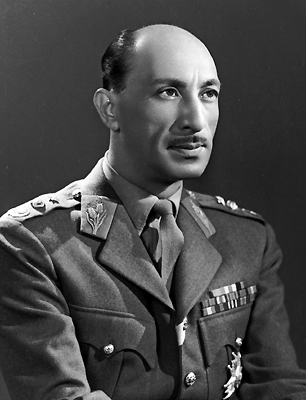
Mohammed Zahir Shah was the last king of Afghanistan, reigning from 8 November 1933 until he was deposed on 17 July 1973. Serving for 40 years, Zahir was the longest-serving ruler of Afghanistan since the foundation of the Durrani Empire in the 18th century. He expanded Afghanistan's diplomatic relations with many countries, including with both sides of the Cold War. In the 1950s, Zahir Shah began modernizing the country, culminating in the creation of a new constitution and a constitutional monarchy system. Demonstrating nonpartisanship, his long reign was marked by peace in the country that was lost afterwards.
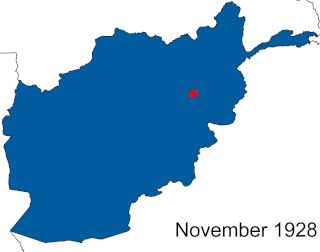
The Afghan Civil War was fought from 14 November 1928 to 13 October 1929. Rebelling, and subsequently governing Saqqawist (Saqāwīhā) forces under Habibullāh Kalakāni fought against various opposing tribes and rival monarchs in the Kingdom of Afghanistan, among whom Mohammed Nādir Khān eventually achieved a preponderant role. Despite early successes, such as the capture of Kabul and defeat of Amanullah Khan on 17 January 1929 or the capture of Kandahar on 3 June, the Saqqawists were eventually deposed by anti-Saqqawist forces led by Nadir on 13 October 1929, leading to Nadir's ascension as King of Afghanistan, who ruled until his assassination on 3 November 1933.

The national flag of the Islamic Emirate of Afghanistan, also used as the flag of the Taliban, consists of a white field with a black Shahada. It was adopted on 15 August 2021 with the victory of the Taliban in the 2001–2021 war. Since the Anglo-Afghan War of 1919, also known as the War of Independence, Afghanistan has used about 19 national flags, more than any other country in this period. The national flag had black, red and green colors most of the time during the period.

The Third Anglo-Afghan War began on 6 May 1919 when the Emirate of Afghanistan invaded British India and ended with an armistice on 8 August 1919. The Anglo-Afghan Treaty of 1919 resulted in the Afghans gaining control of foreign affairs from Britain and the British recognizing the Durand Line as the border between Afghanistan and British India. According to British author Michael Barthorp, it was a strategic victory for the British because the Durand Line was reaffirmed as the border between Afghanistan and the British Raj, and the Afghans agreed not to foment trouble on the British side. However, Afghans who were on the British side of the border did cause concerns due to revolts.

Ghazi Amanullah Khan was the sovereign of Afghanistan from 1919, first as Emir and after 1926 as King, until his abdication in 1929. After the end of the Third Anglo-Afghan War in August 1919, Afghanistan was able to relinquish its protected state status to proclaim independence and pursue an independent foreign policy free from the influence of the United Kingdom.
The Khilafat Movement (1919–24), also known as the Caliphate movement or the Indian Muslim movement, was a pan-Islamist political protest campaign launched by Muslims of British India led by Shaukat Ali, Maulana Mohammad Ali Jauhar, Hakim Ajmal Khan, and Abul Kalam Azad to restore the caliph of the Ottoman Caliphate, promote Muslim interests and to bring the Muslim in national struggle. During that time the idea of a separate nation for Muslims in India started to build up slowly. It was a protest against the sanctions placed on the caliph and the Ottoman Empire after the First World War by the Treaty of Sèvres.
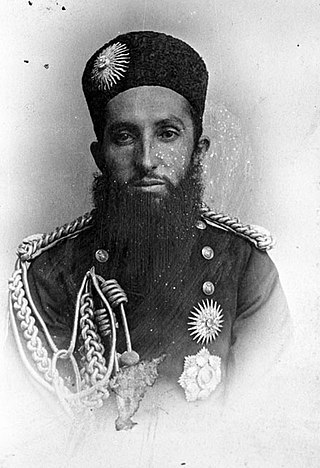
Nasrullah Khan, (1874–1920), sometimes spelt as Nasr Ullah Khan, was shahzada of Afghanistan and second son of Emir Abdur Rahman Khan. He held the throne of Afghanistan as Emir for one week, from 21 to 28 February 1919.
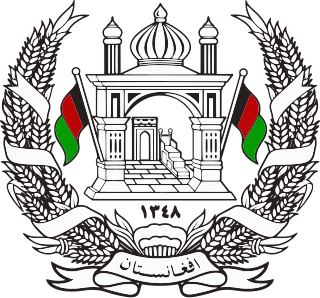
The Barakzai dynasty also known as the Muhmmadzai Dynasty ruled modern day Afghanistan from 1823 to 1978 when the monarchy ended de jure under Musahiban Mohammed Zahir Shah and de facto under his cousin Sardar Mohammed Daoud Khan. The Barakzai dynasty was established by Dost Mohammad Khan after the Durrani dynasty of Ahmad Shah Durrani was removed from power.

The Emirate of Afghanistan also referred to as the Emirate of Kabul Persian: امارت افغانستان, romanized: Amārat-i Afghānistān) was an emirate between Central Asia and South Asia that is now today's Afghanistan and some parts of today's Pakistan. The emirate emerged from the Durrani Empire, when Dost Mohammad Khan, the founder of the Barakzai dynasty in Kabul, prevailed.
Mohammad Gul Khan Momand, also spelled as Mohmand, was both a literary figure and a well-known politician in Afghanistan. He was also known as Wazir Mohammad Gul Khan Momand or Momand Baba. Mohammad Gul Khan was an Army Officer during Afghanistan's Independence war in 1919. He served numerous Government and Leadership positions including Home Minister of Afghanistan.
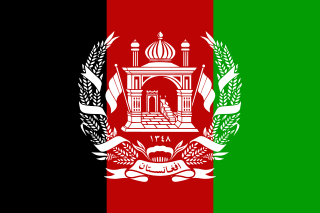
The Kingdom of Afghanistan was a constitutional monarchy in Central Asia established in 1926 as a successor state to the Emirate of Afghanistan. It was proclaimed by its first king, Amanullah Khan, seven years after he acceded to the throne. The monarchy ended in the 1973 Afghan coup d'état.

Mohammed Nadir Shah was King of Afghanistan from 15 October 1929 until his assassination in November 1933. Previously, he served as Minister of War, Afghan Ambassador to France, and as a general in the Royal Afghan Army. He and his son Mohammed Zahir Shah, who succeeded him, are part of the Musahiban.
Bārakzai is the name of a Pashtun tribe from present-day, Kandahar, Afghanistan. '"Barakzai" is a common name among the Pashtuns and it means "son of Barak" in Pashto. According to the Encyclopædia Iranica, "In the detailed Pashtun genealogies there are no fewer than seven instances of the ethnic name Bārakzī, at very different levels of tribal segmentation. Six of them designate simple lineages within six different tribes located in the Solaymān mountains or adjacent lands... The seventh instance, on the other hand, designates one of the most important Pashtun tribes in numbers and historic role, part of the Zīrak branch of the Dorrānay confederation.

Bilateral relations between Afghanistan and the United Kingdom of Great Britain and Northern Ireland span a long and eventful history, dating back to the United Kingdom's Company rule in India, the British-Russian rivalry in Central Asia, and the border between modern Afghanistan and British India. There has been an Afghan embassy in London since 1922 though there was no accredited Afghan ambassador from 1981 to 2001.
Abdul Malik is an Afghan cricketer. He made his international debut for the Afghanistan cricket team in March 2021.

Amanullah loyalism was a series of early-20th-century movements in the Kingdom of Afghanistan to restore Amanullah Khan as king of Afghanistan after he was deposed in January 1929 during the Afghan Civil War. Loyalists were sometimes referred to as Amanite. Loyalists tried to achieve this in various ways, including armed rebellions, political parties, colluding with foreign powers and assassinations. These movements petered out by the late 1940s. Amanullah died in exile in 1960 in Zürich, Switzerland, without ever regaining control, except a brief period of control in southern Afghanistan in the 1929 Afghan Civil War.
References
- ↑ Shah, Ikbal Ali (1933). The tragedy of Amanullah. London: Alexander-Ouseley Limited. p. 131.
- ↑ Hanifi, Shah Mahmoud (2011). Connecting Histories in Afghanistan: Market Relations and State Formation on a Colonial Frontier. Stanford University Press. p. 48. ISBN 9780804777773.
- 1 2 Stewart, Rhea Talley (1973). Fire in Afghanistan, 1914-1929; faith, hope, and the British Empire. Newyork: Doubleday Company. pp. 79, 87. ISBN 0-385-08742-X.
- ↑ Abdul Ghani (1921). A Review of the Political Situation in Central Asia, Lahore: Khosla Brothers
This article has not been added to any content categories . Please help out by adding categories to it so that it can be listed with similar articles, in addition to a stub category. (February 2023) |